ACT is using the Drupal content management platform to drive some of its content management activities. The Drupal deployment is hosted at Pantheon. As part of the deployment a decision was made to integrate access to this content management server with the ACT Active Directory service. This provides:
In order to integrate ACT's Active Directory with Drupal it was decided that this would be accomplished with Active Directory Federation Services (ADFS).
"Active Directory Federation Services (AD FS) ... provide users with single sign-on access to systems and applications located across organizational boundaries. It uses a claims-based access control authorization model to maintain application security and implement federated identity.
Claims-based authentication is the process of authenticating a user based on a set of claims about its identity contained in a trusted token. Such a token is often issued and signed by an entity that is able to authenticate the user by other means, and that is trusted by the entity doing the claims-based authentication."
ACT already had a public facing ADFS that it was using to integrate with other services. Under the ADFS federation service properties ...
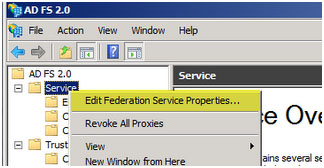
we can confirm the "federation service identifier" to use for this integration. This will be used on the drupal side to configure the access.
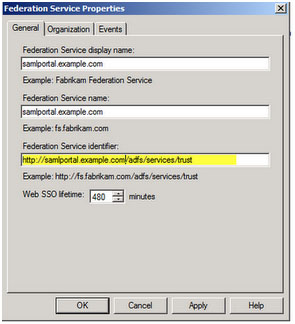
Next we needed to add a new "relying party trust" to ADFS. In the ADFS 2.0 Management console this can be done by selecting "Relying Party Trusts" and "add Relaying party Trust" from the top right corner of the window. Using the wizard we had requested the following configuration:
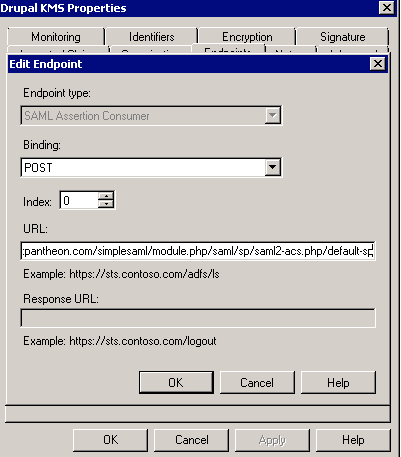
We also required editing of the claim rules so that we had outgoing claim types of UPN, E-Mail Address, Name, Name ID that were all matched against relevant AD attributes.
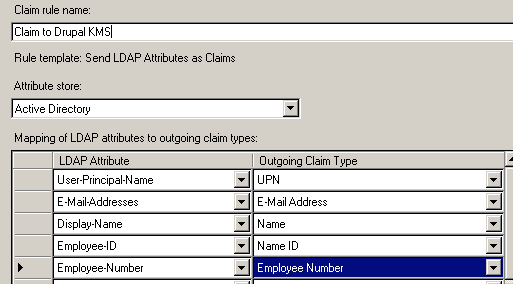
Finally, we also required a copy of the token-signing certificate from ADFS that we would be able to use on the drupal side. This involved browsing to the certificates in ADFS management console, e.g.
The certificate is stored in a single file (.cer or .crt).
With ADFS access setup for drupal to be a relying party we could setup the drupal side. The first part involved installing and enabling the Drupal SAML module: simplesamlphp_auth. At this time of writing we used: recommended release 7.x-2.0-alpha2 (2013-Feb-11).
Next, we followed Pantheon instructions to download and install simplesamlphp-1.11.0 into our git repo at private/simplesamlphp-1.11.0. We added the symlink as suggested from
and copied the certificate from the ADFS process to private/simplesaml-1.11.0/cert.
We followed the advice to modify our /private/simplesaml-1.11.x/config/config.php with:
if (!ini_get('session.save_handler')) {
ini_set('session.save_handler', 'file');
}
$ps = json_decode($_SERVER['PRESSFLOW_SETTINGS'], TRUE);
$host = $_SERVER['HTTP_HOST'];
$drop_id = $ps['conf']['pantheon_binding'];
$db = $ps['databases']['default']['default'];
$config = array (
'baseurlpath' => 'https://'. $host .'/simplesaml/',
'certdir' => 'cert/',
'loggingdir' => 'log/',
'datadir' => 'data/',
'tempdir' => '/srv/bindings/'. $drop_id .'/tmp/simplesaml',
# Your $config array continues for a while...
# until we get to the "store.type" value, where we put in DB config...
'store.type' => 'sql',
'store.sql.dsn' => 'mysql:host='. $db['host'] .';port='. $db['port'] .';dbname='. $db['database'],
'store.sql.username' => $db['username'],
'store.sql.password' => $db['password'],
and also modified our /sites/default/settings.php with:
$ps = json_decode($_SERVER['PRESSFLOW_SETTINGS'], TRUE);
$conf['simplesamlphp_auth_installdir'] = '/srv/bindings/'. $ps['conf']['pantheon_binding'] .'/code/private/simplesamlphp-1.11.0';
We modified our /private/simplesaml-1.11.0/config/authsources.php to support both core and federated SAML configurations. NOTE: The idp matches the federation service identifier we pointed out above.
<?php
$config = array(
'admin' => array(
'core:AdminPassword',
),
'default-sp' => array(
'saml:SP',
'entityID' => 'urn:drupal:adfs-abg',
'idp' => 'http://sts.act.org/adfs/services/trust',
'NameIDPolicy' => NULL,
),
);
Then we configured the /private/simplesaml-1.11.0/metadata/saml20-idp-remote.php as follows:
<?php
$metadata['http://sts.act.org/adfs/services/trust'] = array(
'name' => array(
'en' => 'ACT ADFS',
),
'description' => 'ACT ADFS Setup',
'SingleSignOnService' => 'https://sts.act.org/adfs/ls/',
'certificate' => 'act-adfs.crt',
);
There were some additional security/production measures we took with the /private/simplesaml-1.11.x/config/config.php configuration including:
Finally, we configured the simplesamlphp_auth module from the console:

We checked the activate and force https options and double-checked the installation directory and auth source.
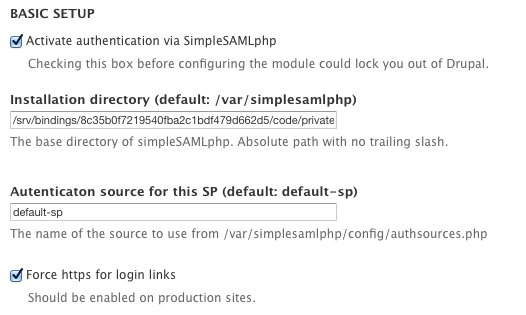
Then we plugged in the attribute data from the claims to map into the Drupal user attributes.

With both ADFS setup and Drupal configured with the simplesamlphp module live we can now navigate to the homepage. The idea here is that we will follow a flow similar to this one where Drupal is in the role of the ASP.NET Web Portal.

That is, we will go to the Drupal site, redirect to the ADFS STS site where we will present our credentials which will then redirect us back to Drupal with the appropriate claims data. As we can see from this home screen, we now have a "Federated Log In" link.

When we click that we are taken to the ADFS login.

This involved making a SAML AuthnRequest assertion (which we can trace using SAML tracer )

On the successful presentation of account credentials we are redirected back into the Drupal site. If the user account didn't already in Drupal it is provisioned automatically.
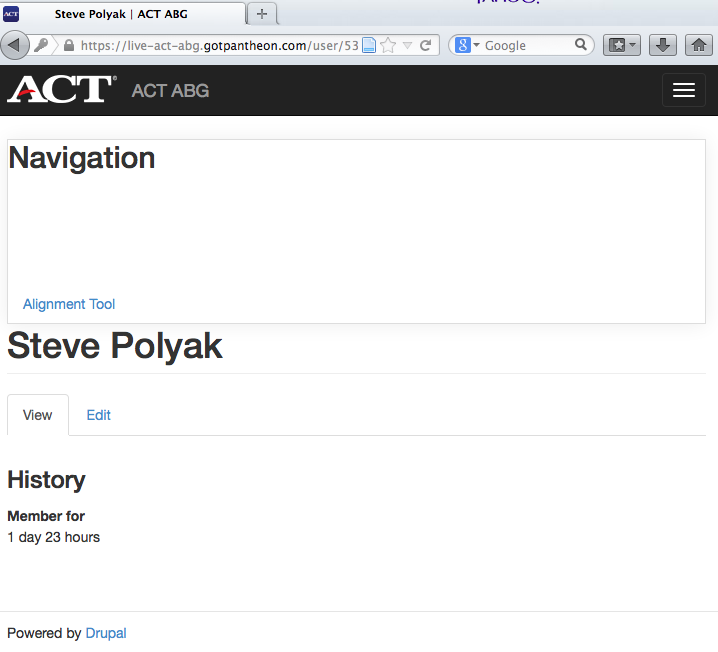
This involved accepting the SAML response.

It should also be mentioned that the simple SAML module provides a nice little console where you can inspect and troubleshoot your SAML configuration. You simply navigate to '/simplesaml' and are presented with tabs relating to configuration, federation and authentication.



This approach heavily followed and borrowed from these excellent resources: